-
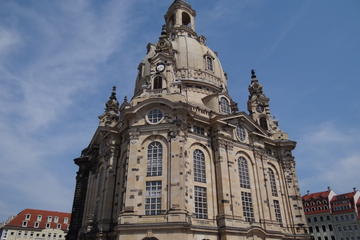 Dresden Frauenkirche
Dresden Frauenkirche The Frauenkirche in Dresden was built between 1726 and 1743. Its dome collapsed on Feb. 15, 1945 during the bombings of World War II. After the war, the ruins of the church were left as a war memorial. Once Dresden and the rest of East Germany were reunified with West Germany,
Dresden Frauenkirche
Dresden Frauenkirche The Frauenkirche in Dresden was built between 1726 and 1743. Its dome collapsed on Feb. 15, 1945 during the bombings of World War II. After the war, the ruins of the church were left as a war memorial. Once Dresden and the rest of East Germany were reunified with West Germany,
-
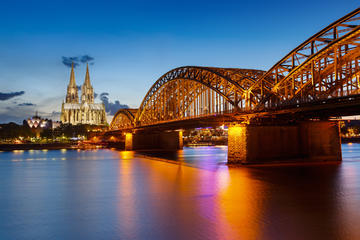 Hohenzollern Bridge (Hohenzollernbrücke)
Hohenzollern Bridge (Hohenzollernbrücke) The waters of the mighty Rhine split Cologne in half, and the city is united across a series of seven bridges, with none more splendid than the spans of the Hohenzollernbrücke, which stretch 1,342 feet (410 meters) across the river in three great steel arch
Hohenzollern Bridge (Hohenzollernbrücke)
Hohenzollern Bridge (Hohenzollernbrücke) The waters of the mighty Rhine split Cologne in half, and the city is united across a series of seven bridges, with none more splendid than the spans of the Hohenzollernbrücke, which stretch 1,342 feet (410 meters) across the river in three great steel arch
-
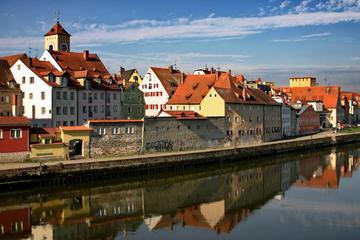 Regensburg
Regensburg Set on the banks of the Danube River, the medieval city of Regensburg (or Ratisbon) made a name for itself as an important trade center in the Middle Ages and now serves as a popular tourist destination for those traveling the Romantic Road. The UNESCO World Heritage listed historic cen
Regensburg
Regensburg Set on the banks of the Danube River, the medieval city of Regensburg (or Ratisbon) made a name for itself as an important trade center in the Middle Ages and now serves as a popular tourist destination for those traveling the Romantic Road. The UNESCO World Heritage listed historic cen
-
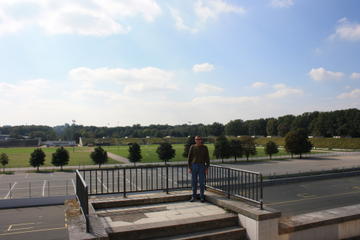 Nazi Party Rally Grounds
Nazi Party Rally Grounds The site of six of Hitler’s infamous Nazi Party rallies sits southeast of Nuremberg city center, a vast tract of land covering 4.2 square miles (11 square kilometers) lying virtually untended a short, lakeside walk from the Nazi Documentation Center. The massive parade gro
Nazi Party Rally Grounds
Nazi Party Rally Grounds The site of six of Hitler’s infamous Nazi Party rallies sits southeast of Nuremberg city center, a vast tract of land covering 4.2 square miles (11 square kilometers) lying virtually untended a short, lakeside walk from the Nazi Documentation Center. The massive parade gro
-
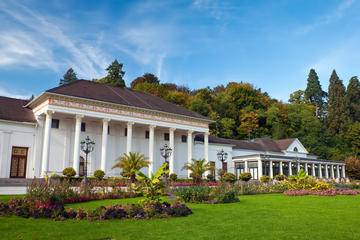 Baden-Baden
Baden-Baden One of the northernmost towns in Baden-Württemberg’s idyllic Black Forest region, the roman spa town of Baden-Baden has long been one of South Germany’s most popular holiday destinations, entertaining everyone from Queen Victoria to Victoria Beckham over the years. Perched on the Frenc
Baden-Baden
Baden-Baden One of the northernmost towns in Baden-Württemberg’s idyllic Black Forest region, the roman spa town of Baden-Baden has long been one of South Germany’s most popular holiday destinations, entertaining everyone from Queen Victoria to Victoria Beckham over the years. Perched on the Frenc
-
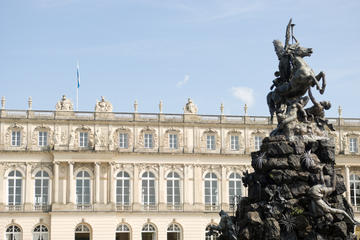 Herrenchiemsee
Herrenchiemsee Herreninsel is the larger of two inhabited islands in Chiemsee, a Bavarian lake near the Austrian border. While it features a monastery which dates back to the 8th century, the site of the post-war conference which drafted West Germany’s constitution, the island’s main attraction is
Herrenchiemsee
Herrenchiemsee Herreninsel is the larger of two inhabited islands in Chiemsee, a Bavarian lake near the Austrian border. While it features a monastery which dates back to the 8th century, the site of the post-war conference which drafted West Germany’s constitution, the island’s main attraction is
-
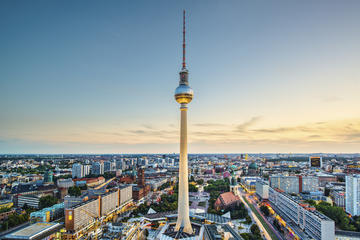 Berlin TV Tower Restaurant
Berlin TV Tower Restaurant Berlins TV Tower is one of the most iconic buildings in the city as well as in Germany. The viewing level offers 360 degree views of the city from 666 feet high. From the tower you can see the Spree River, the Reichstag Building, the Berlin Cathedral, Brandenburg Gate, T
Berlin TV Tower Restaurant
Berlin TV Tower Restaurant Berlins TV Tower is one of the most iconic buildings in the city as well as in Germany. The viewing level offers 360 degree views of the city from 666 feet high. From the tower you can see the Spree River, the Reichstag Building, the Berlin Cathedral, Brandenburg Gate, T
-
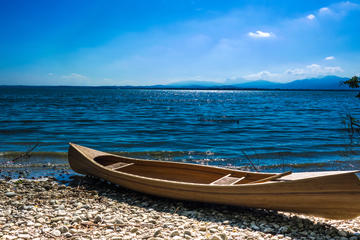 Chiemsee
Chiemsee At 80 sq km (31 square miles) Chiemsee is the largest lake in Bavaria, fed by the snowmelt water of the rivers Prien Tiroler and Achen, which drain the lake on its northern shores as the Alz.Attractions around Chiemsee include the house designed by flamboyant Secessionist artist Julius Ex
Chiemsee
Chiemsee At 80 sq km (31 square miles) Chiemsee is the largest lake in Bavaria, fed by the snowmelt water of the rivers Prien Tiroler and Achen, which drain the lake on its northern shores as the Alz.Attractions around Chiemsee include the house designed by flamboyant Secessionist artist Julius Ex
-
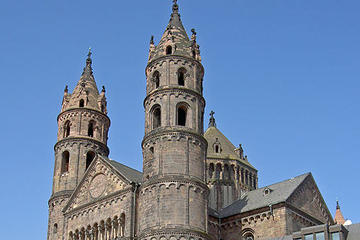 Worms
Worms Worms (pronounced more like Vohrms in German), is a town of around 86,000 people on the banks of the Rhine River. While it is now quite industrial, with some fame for its wine, its real claim on our attention is its age. Worms was settled by the Celts and is locked in a 3-way battle with the
Worms
Worms Worms (pronounced more like Vohrms in German), is a town of around 86,000 people on the banks of the Rhine River. While it is now quite industrial, with some fame for its wine, its real claim on our attention is its age. Worms was settled by the Celts and is locked in a 3-way battle with the
-
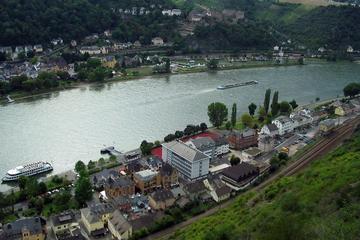 St Goar
St Goar St. Goar is a small town on the Rhine River in the area known as the Rhine Gorge due to the mountains which rise on either side. The most famous landmark is the Loreley Rock opposite the town, which is known for its hazard to river shipping, and the legend of its siren, Loreley. The other
St Goar
St Goar St. Goar is a small town on the Rhine River in the area known as the Rhine Gorge due to the mountains which rise on either side. The most famous landmark is the Loreley Rock opposite the town, which is known for its hazard to river shipping, and the legend of its siren, Loreley. The other
-
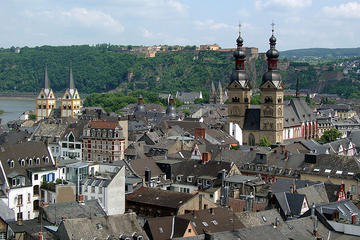 Koblenz
Koblenz Koblenz is very happily situated at the meeting point of the Rhine and Moselle Rivers, surrounded by four low hills. The town is 2,000 years old, founded by the Romans around a castle in the year 9 BC. Since then a series of invading armies and royalty - Prussians, French, Germans, Franks
Koblenz
Koblenz Koblenz is very happily situated at the meeting point of the Rhine and Moselle Rivers, surrounded by four low hills. The town is 2,000 years old, founded by the Romans around a castle in the year 9 BC. Since then a series of invading armies and royalty - Prussians, French, Germans, Franks
-
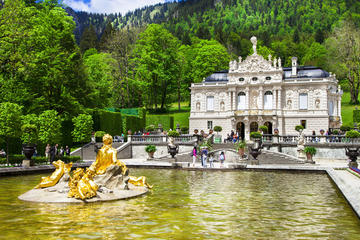 Oberammergau
Oberammergau Oberammergau is a small town in southern Germany in the region of Bavaria. The town is known for its Passion Play which is performed every 10 years in years ending in zero. The tradition dates back to 1633 when the towns citizens made a pact with God to perform the Passion of Jesus Ch
Oberammergau
Oberammergau Oberammergau is a small town in southern Germany in the region of Bavaria. The town is known for its Passion Play which is performed every 10 years in years ending in zero. The tradition dates back to 1633 when the towns citizens made a pact with God to perform the Passion of Jesus Ch
-
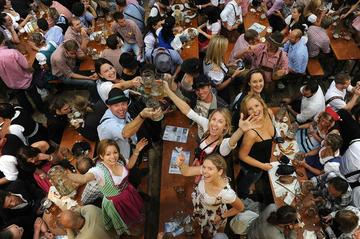 Beer and Oktoberfest Museum
Beer and Oktoberfest Museum Housed in the oldest town house in Munich, the Beer and Oktoberfest Museum features permanent exhibitions on topics ranging from the history of beer to the Bavarian monks’ purity laws and the unique quality of Munich’s beer. As for the story of Oktoberfest, on the upper
Beer and Oktoberfest Museum
Beer and Oktoberfest Museum Housed in the oldest town house in Munich, the Beer and Oktoberfest Museum features permanent exhibitions on topics ranging from the history of beer to the Bavarian monks’ purity laws and the unique quality of Munich’s beer. As for the story of Oktoberfest, on the upper
-
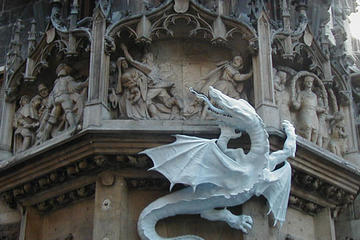 Old Town Hall (Altes Rathaus)
Old Town Hall (Altes Rathaus) Enclosing Munichs central square Marienplatz, the Old Town Hall, Altes Rathaus in German, serves as the center for city council activity for the historic city. The Old Town Hall is also known for its architechture style change from Baroque to Gothic after the structur
Old Town Hall (Altes Rathaus)
Old Town Hall (Altes Rathaus) Enclosing Munichs central square Marienplatz, the Old Town Hall, Altes Rathaus in German, serves as the center for city council activity for the historic city. The Old Town Hall is also known for its architechture style change from Baroque to Gothic after the structur
-
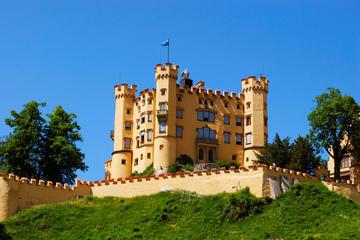 Hohenschwangau Castle
Hohenschwangau Castle Perched on a hilltop overlooking the Alpsee and Schwansee lakes and close by the Austrian border, the magnificent Hohenschwangau Castle (Schloss Hohenschwangau) is a dramatic gothic fortress dating back to the 19th century. The sister castle to the world-renowned Neuschwanste
Hohenschwangau Castle
Hohenschwangau Castle Perched on a hilltop overlooking the Alpsee and Schwansee lakes and close by the Austrian border, the magnificent Hohenschwangau Castle (Schloss Hohenschwangau) is a dramatic gothic fortress dating back to the 19th century. The sister castle to the world-renowned Neuschwanste
-
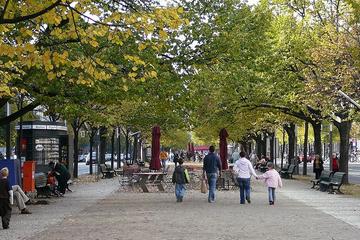 Unter den Linden
Unter den Linden Named for the lime trees lining its central pedestrianized strip, Unter den Linden is one of Berlin’s most famous thoroughfares, and the former hub of historic Berlin. Many of the avenue’s once palatial buildings are being restored, and it’s a popular location for embassies, shops
Unter den Linden
Unter den Linden Named for the lime trees lining its central pedestrianized strip, Unter den Linden is one of Berlin’s most famous thoroughfares, and the former hub of historic Berlin. Many of the avenue’s once palatial buildings are being restored, and it’s a popular location for embassies, shops
-
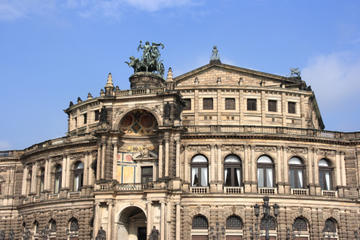 Semper Opera House (Semperoper Erleben)
Semper Opera House (Semperoper Erleben) Dresdens Semper Opera House, or Semperoper in German, was built between 1838 and 1841. The opera house is located along the Elbe River in the historic center of Dresden. It is Germanys most famous opera house and the home of the Saxon State Orchestra, one of
Semper Opera House (Semperoper Erleben)
Semper Opera House (Semperoper Erleben) Dresdens Semper Opera House, or Semperoper in German, was built between 1838 and 1841. The opera house is located along the Elbe River in the historic center of Dresden. It is Germanys most famous opera house and the home of the Saxon State Orchestra, one of
-
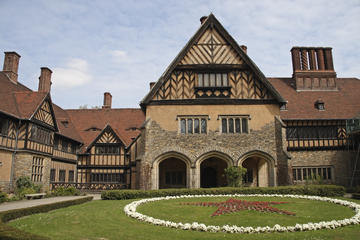 Cecilienhof Palace
Cecilienhof Palace Potsdam’s Cecilienhof Palace (Schloss Cecilienhof) was the last palace built by the House of Hohenzollern, the dynasty that ruled the Kingdom of Prussia and the German Empire until the end of World War I. These days, the former home of Crown Prince Wilhelm is best known for the
Cecilienhof Palace
Cecilienhof Palace Potsdam’s Cecilienhof Palace (Schloss Cecilienhof) was the last palace built by the House of Hohenzollern, the dynasty that ruled the Kingdom of Prussia and the German Empire until the end of World War I. These days, the former home of Crown Prince Wilhelm is best known for the
-
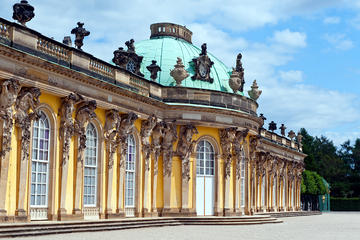 Potsdam
Potsdam Just 15 miles (24 km) outside of Germany’s capital city Berlin, Potsdam is a very popular day trip from Berlin. Potsdam is the capital of the German federal state of Brandenburg, and many of its historical sites were built during the eighteenth and nineteenth centuries when the city was th
Potsdam
Potsdam Just 15 miles (24 km) outside of Germany’s capital city Berlin, Potsdam is a very popular day trip from Berlin. Potsdam is the capital of the German federal state of Brandenburg, and many of its historical sites were built during the eighteenth and nineteenth centuries when the city was th
-
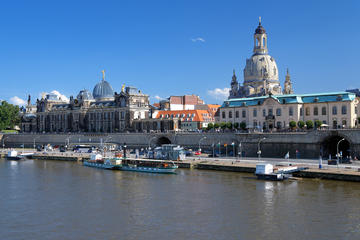 Dresden
Dresden Once the jewel of baroque Germany, Dresden’s Old Town was almost completely destroyed during the World War II bombings, but after years of painstaking restoration work, the city’s architectural highlights are once again dazzling. Evocatively nicknamed the “Florence of the North,” the Saxon
Dresden
Dresden Once the jewel of baroque Germany, Dresden’s Old Town was almost completely destroyed during the World War II bombings, but after years of painstaking restoration work, the city’s architectural highlights are once again dazzling. Evocatively nicknamed the “Florence of the North,” the Saxon
Total
2004 -travel
FirstPage PreviousPage NextPage LastPage CurrentPage:
11/101 20-travel/Page GoTo Page:
 Dresden Frauenkirche
Dresden Frauenkirche The Frauenkirche in Dresden was built between 1726 and 1743. Its dome collapsed on Feb. 15, 1945 during the bombings of World War II. After the war, the ruins of the church were left as a war memorial. Once Dresden and the rest of East Germany were reunified with West Germany,
Dresden Frauenkirche
Dresden Frauenkirche The Frauenkirche in Dresden was built between 1726 and 1743. Its dome collapsed on Feb. 15, 1945 during the bombings of World War II. After the war, the ruins of the church were left as a war memorial. Once Dresden and the rest of East Germany were reunified with West Germany,
 Hohenzollern Bridge (Hohenzollernbrücke)
Hohenzollern Bridge (Hohenzollernbrücke) The waters of the mighty Rhine split Cologne in half, and the city is united across a series of seven bridges, with none more splendid than the spans of the Hohenzollernbrücke, which stretch 1,342 feet (410 meters) across the river in three great steel arch
Hohenzollern Bridge (Hohenzollernbrücke)
Hohenzollern Bridge (Hohenzollernbrücke) The waters of the mighty Rhine split Cologne in half, and the city is united across a series of seven bridges, with none more splendid than the spans of the Hohenzollernbrücke, which stretch 1,342 feet (410 meters) across the river in three great steel arch
 Regensburg
Regensburg Set on the banks of the Danube River, the medieval city of Regensburg (or Ratisbon) made a name for itself as an important trade center in the Middle Ages and now serves as a popular tourist destination for those traveling the Romantic Road. The UNESCO World Heritage listed historic cen
Regensburg
Regensburg Set on the banks of the Danube River, the medieval city of Regensburg (or Ratisbon) made a name for itself as an important trade center in the Middle Ages and now serves as a popular tourist destination for those traveling the Romantic Road. The UNESCO World Heritage listed historic cen
 Nazi Party Rally Grounds
Nazi Party Rally Grounds The site of six of Hitler’s infamous Nazi Party rallies sits southeast of Nuremberg city center, a vast tract of land covering 4.2 square miles (11 square kilometers) lying virtually untended a short, lakeside walk from the Nazi Documentation Center. The massive parade gro
Nazi Party Rally Grounds
Nazi Party Rally Grounds The site of six of Hitler’s infamous Nazi Party rallies sits southeast of Nuremberg city center, a vast tract of land covering 4.2 square miles (11 square kilometers) lying virtually untended a short, lakeside walk from the Nazi Documentation Center. The massive parade gro
 Baden-Baden
Baden-Baden One of the northernmost towns in Baden-Württemberg’s idyllic Black Forest region, the roman spa town of Baden-Baden has long been one of South Germany’s most popular holiday destinations, entertaining everyone from Queen Victoria to Victoria Beckham over the years. Perched on the Frenc
Baden-Baden
Baden-Baden One of the northernmost towns in Baden-Württemberg’s idyllic Black Forest region, the roman spa town of Baden-Baden has long been one of South Germany’s most popular holiday destinations, entertaining everyone from Queen Victoria to Victoria Beckham over the years. Perched on the Frenc
 Herrenchiemsee
Herrenchiemsee Herreninsel is the larger of two inhabited islands in Chiemsee, a Bavarian lake near the Austrian border. While it features a monastery which dates back to the 8th century, the site of the post-war conference which drafted West Germany’s constitution, the island’s main attraction is
Herrenchiemsee
Herrenchiemsee Herreninsel is the larger of two inhabited islands in Chiemsee, a Bavarian lake near the Austrian border. While it features a monastery which dates back to the 8th century, the site of the post-war conference which drafted West Germany’s constitution, the island’s main attraction is
 Berlin TV Tower Restaurant
Berlin TV Tower Restaurant Berlins TV Tower is one of the most iconic buildings in the city as well as in Germany. The viewing level offers 360 degree views of the city from 666 feet high. From the tower you can see the Spree River, the Reichstag Building, the Berlin Cathedral, Brandenburg Gate, T
Berlin TV Tower Restaurant
Berlin TV Tower Restaurant Berlins TV Tower is one of the most iconic buildings in the city as well as in Germany. The viewing level offers 360 degree views of the city from 666 feet high. From the tower you can see the Spree River, the Reichstag Building, the Berlin Cathedral, Brandenburg Gate, T
 Chiemsee
Chiemsee At 80 sq km (31 square miles) Chiemsee is the largest lake in Bavaria, fed by the snowmelt water of the rivers Prien Tiroler and Achen, which drain the lake on its northern shores as the Alz.Attractions around Chiemsee include the house designed by flamboyant Secessionist artist Julius Ex
Chiemsee
Chiemsee At 80 sq km (31 square miles) Chiemsee is the largest lake in Bavaria, fed by the snowmelt water of the rivers Prien Tiroler and Achen, which drain the lake on its northern shores as the Alz.Attractions around Chiemsee include the house designed by flamboyant Secessionist artist Julius Ex
 Worms
Worms Worms (pronounced more like Vohrms in German), is a town of around 86,000 people on the banks of the Rhine River. While it is now quite industrial, with some fame for its wine, its real claim on our attention is its age. Worms was settled by the Celts and is locked in a 3-way battle with the
Worms
Worms Worms (pronounced more like Vohrms in German), is a town of around 86,000 people on the banks of the Rhine River. While it is now quite industrial, with some fame for its wine, its real claim on our attention is its age. Worms was settled by the Celts and is locked in a 3-way battle with the
 St Goar
St Goar St. Goar is a small town on the Rhine River in the area known as the Rhine Gorge due to the mountains which rise on either side. The most famous landmark is the Loreley Rock opposite the town, which is known for its hazard to river shipping, and the legend of its siren, Loreley. The other
St Goar
St Goar St. Goar is a small town on the Rhine River in the area known as the Rhine Gorge due to the mountains which rise on either side. The most famous landmark is the Loreley Rock opposite the town, which is known for its hazard to river shipping, and the legend of its siren, Loreley. The other
 Koblenz
Koblenz Koblenz is very happily situated at the meeting point of the Rhine and Moselle Rivers, surrounded by four low hills. The town is 2,000 years old, founded by the Romans around a castle in the year 9 BC. Since then a series of invading armies and royalty - Prussians, French, Germans, Franks
Koblenz
Koblenz Koblenz is very happily situated at the meeting point of the Rhine and Moselle Rivers, surrounded by four low hills. The town is 2,000 years old, founded by the Romans around a castle in the year 9 BC. Since then a series of invading armies and royalty - Prussians, French, Germans, Franks
 Oberammergau
Oberammergau Oberammergau is a small town in southern Germany in the region of Bavaria. The town is known for its Passion Play which is performed every 10 years in years ending in zero. The tradition dates back to 1633 when the towns citizens made a pact with God to perform the Passion of Jesus Ch
Oberammergau
Oberammergau Oberammergau is a small town in southern Germany in the region of Bavaria. The town is known for its Passion Play which is performed every 10 years in years ending in zero. The tradition dates back to 1633 when the towns citizens made a pact with God to perform the Passion of Jesus Ch
 Beer and Oktoberfest Museum
Beer and Oktoberfest Museum Housed in the oldest town house in Munich, the Beer and Oktoberfest Museum features permanent exhibitions on topics ranging from the history of beer to the Bavarian monks’ purity laws and the unique quality of Munich’s beer. As for the story of Oktoberfest, on the upper
Beer and Oktoberfest Museum
Beer and Oktoberfest Museum Housed in the oldest town house in Munich, the Beer and Oktoberfest Museum features permanent exhibitions on topics ranging from the history of beer to the Bavarian monks’ purity laws and the unique quality of Munich’s beer. As for the story of Oktoberfest, on the upper
 Old Town Hall (Altes Rathaus)
Old Town Hall (Altes Rathaus) Enclosing Munichs central square Marienplatz, the Old Town Hall, Altes Rathaus in German, serves as the center for city council activity for the historic city. The Old Town Hall is also known for its architechture style change from Baroque to Gothic after the structur
Old Town Hall (Altes Rathaus)
Old Town Hall (Altes Rathaus) Enclosing Munichs central square Marienplatz, the Old Town Hall, Altes Rathaus in German, serves as the center for city council activity for the historic city. The Old Town Hall is also known for its architechture style change from Baroque to Gothic after the structur
 Hohenschwangau Castle
Hohenschwangau Castle Perched on a hilltop overlooking the Alpsee and Schwansee lakes and close by the Austrian border, the magnificent Hohenschwangau Castle (Schloss Hohenschwangau) is a dramatic gothic fortress dating back to the 19th century. The sister castle to the world-renowned Neuschwanste
Hohenschwangau Castle
Hohenschwangau Castle Perched on a hilltop overlooking the Alpsee and Schwansee lakes and close by the Austrian border, the magnificent Hohenschwangau Castle (Schloss Hohenschwangau) is a dramatic gothic fortress dating back to the 19th century. The sister castle to the world-renowned Neuschwanste
 Unter den Linden
Unter den Linden Named for the lime trees lining its central pedestrianized strip, Unter den Linden is one of Berlin’s most famous thoroughfares, and the former hub of historic Berlin. Many of the avenue’s once palatial buildings are being restored, and it’s a popular location for embassies, shops
Unter den Linden
Unter den Linden Named for the lime trees lining its central pedestrianized strip, Unter den Linden is one of Berlin’s most famous thoroughfares, and the former hub of historic Berlin. Many of the avenue’s once palatial buildings are being restored, and it’s a popular location for embassies, shops
 Semper Opera House (Semperoper Erleben)
Semper Opera House (Semperoper Erleben) Dresdens Semper Opera House, or Semperoper in German, was built between 1838 and 1841. The opera house is located along the Elbe River in the historic center of Dresden. It is Germanys most famous opera house and the home of the Saxon State Orchestra, one of
Semper Opera House (Semperoper Erleben)
Semper Opera House (Semperoper Erleben) Dresdens Semper Opera House, or Semperoper in German, was built between 1838 and 1841. The opera house is located along the Elbe River in the historic center of Dresden. It is Germanys most famous opera house and the home of the Saxon State Orchestra, one of
 Cecilienhof Palace
Cecilienhof Palace Potsdam’s Cecilienhof Palace (Schloss Cecilienhof) was the last palace built by the House of Hohenzollern, the dynasty that ruled the Kingdom of Prussia and the German Empire until the end of World War I. These days, the former home of Crown Prince Wilhelm is best known for the
Cecilienhof Palace
Cecilienhof Palace Potsdam’s Cecilienhof Palace (Schloss Cecilienhof) was the last palace built by the House of Hohenzollern, the dynasty that ruled the Kingdom of Prussia and the German Empire until the end of World War I. These days, the former home of Crown Prince Wilhelm is best known for the
 Potsdam
Potsdam Just 15 miles (24 km) outside of Germany’s capital city Berlin, Potsdam is a very popular day trip from Berlin. Potsdam is the capital of the German federal state of Brandenburg, and many of its historical sites were built during the eighteenth and nineteenth centuries when the city was th
Potsdam
Potsdam Just 15 miles (24 km) outside of Germany’s capital city Berlin, Potsdam is a very popular day trip from Berlin. Potsdam is the capital of the German federal state of Brandenburg, and many of its historical sites were built during the eighteenth and nineteenth centuries when the city was th
 Dresden
Dresden Once the jewel of baroque Germany, Dresden’s Old Town was almost completely destroyed during the World War II bombings, but after years of painstaking restoration work, the city’s architectural highlights are once again dazzling. Evocatively nicknamed the “Florence of the North,” the Saxon
Dresden
Dresden Once the jewel of baroque Germany, Dresden’s Old Town was almost completely destroyed during the World War II bombings, but after years of painstaking restoration work, the city’s architectural highlights are once again dazzling. Evocatively nicknamed the “Florence of the North,” the Saxon